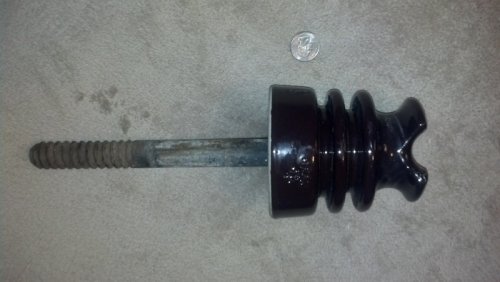Today I found this brown ceramic insulator walking a power line. It was attached to an old wooden board off the previous power pole. It is 4 3/4 inches tall, 4 1/4 inches wide at the base, and 13 inches in diameter at the base. I don't know anything about these. Are these collectable? How old is it? How much is it worth? There were two more there, so I will go back and get the other two if it is worth it? Any help would be appreciated. Thanks.



